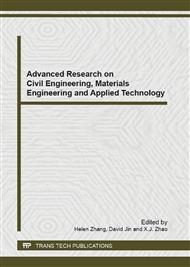p.261
p.266
p.270
p.274
p.280
p.284
p.289
p.293
p.298
The Study of Classification Analysis on Oil Exploration Research Trends and Digging Technology Based on Properties of Biochemical Materials (2012-2013)
Abstract:
The study aimed at analyzing the keywords of the oil exploration research papers abstracts in 2012 and 2013 and using the random forests model to make the classification analysis in order to find the importance and similarities of 2012 and 2013 research trends. The contribution of the study included the following two points. First, the study used the text mining method in order to explore the content of oil exploration research paper abstracts. Second, the study applied the AdaBoost classification analysis to explore the relationship of the keywords between the two years’ keywords.
Info:
Periodical:
Pages:
280-283
Citation:
Online since:
December 2013
Authors:
Keywords:
Price:
Сopyright:
© 2014 Trans Tech Publications Ltd. All Rights Reserved
Share:
Citation:


